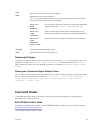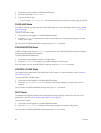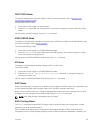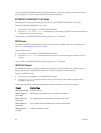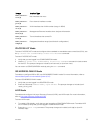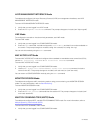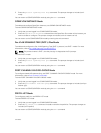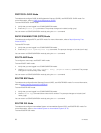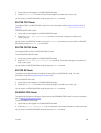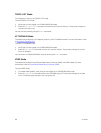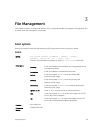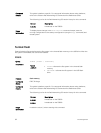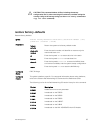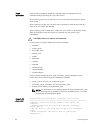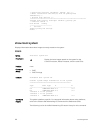
1. Verify that you are logged in to CONFIGURATION mode.
2. Use the router isis command. The prompt changes to include (conf-router_isis).
You can return to CONFIGURATION mode by using the exit command.
ROUTER OSPF Mode
To configure OSPF, use ROUTER OSPF mode. For more information, refer to Open Shortest Path First
(OSPFv2).
To enter ROUTER OSPF mode:
1. Verify that you are logged in to CONFIGURATION mode.
2. Enter the router ospf {process-id} command. The prompt changes to include (conf-
router_
ospf-id).
You can switch to INTERFACE mode by using the interface command or you can switch to ROUTER
RIP mode by using the router rip command.
ROUTER OSPFV3 Mode
To configure OSPF for IPv6, use ROUTER OSPFV3 mode.
To enter ROUTER OSPFV3 mode:
1. Verify that you are logged in to CONFIGURATION mode.
2. Enter the ipv6 router ospf {process-id} command. The prompt changes to include (conf-
ipv6-router_ospf).
You can return to CONFIGURATION mode by using the exit command.
ROUTER RIP Mode
To enable and configure Router Information Protocol (RIP), use ROUTER RIP mode. For more
information, refer to Routing Information Protocol (RIP).
To enter ROUTER RIP mode:
1. Verify that you are logged in to CONFIGURATION mode.
2. Enter the router rip command. The prompt changes to include (conf-router_rip).
You can return to CONFIGURATION mode by using the exit command.
SPANNING TREE Mode
To enable and configure the Spanning Tree protocol, use SPANNING TREE mode. For more information,
refer to Spanning Tree Protocol (STP).
To enter SPANNING TREE mode:
1. Verify that you are logged in to CONFIGURATION mode.
2. Enter the protocol spanning-tree stp-id command. The prompt changes to include (conf-stp).
You can return to CONFIGURATION mode by using the exit command.
CLI Basics
59



